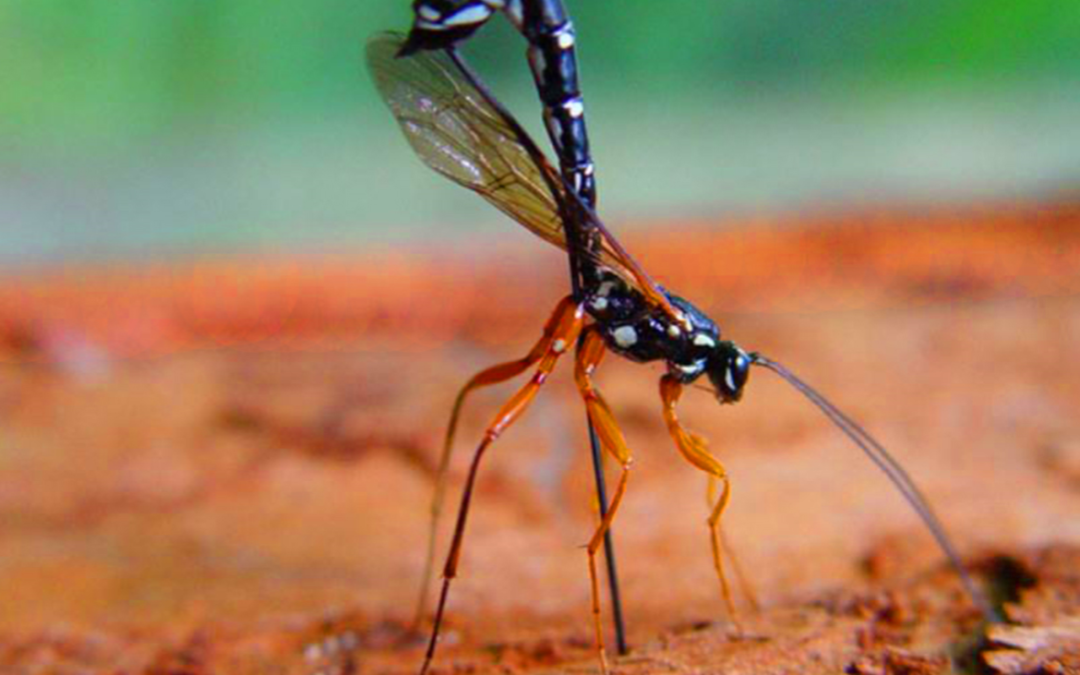Imagine a tiny creature that looks so delicate that the slightest wind might blow it over. Then this little thing lands on a hard tree trunk, and begins thumping with something that looks as delicate and frail as the leg of a daddy-long-legs. Frail? that antennae of the ichneumon wasp happens to be a high-power extension drill!
The drill is about 4 1/2 inches long; so long that it curves up and down as the small fly thumps on the hardwood with it. After thumping for a time, the tiny creature somehow knows it has found the right place to start work.
Drilling begins. This little wasp uses that delicate feeler to cut its way down through several inches of hard (hard!) oak wood! How can it do it? No one has any slightest idea. But it does do it.
The second miracle is what the wasp is drilling for the larvae of a special beetle. How does it know where to start its drill so as to go straight down (it always drills straight down) and reach a beetle larvae? No one can figure that one out either. Somehow that initial faint thumping gave it the needed information.
The ichneumon wasp (Thalessa) lays its eggs on the larvae of the Tremex. When those eggs hatch, they will have food to grow on. Then, before they grow too large, tiny ichneumon wasps come out through that original hole.

